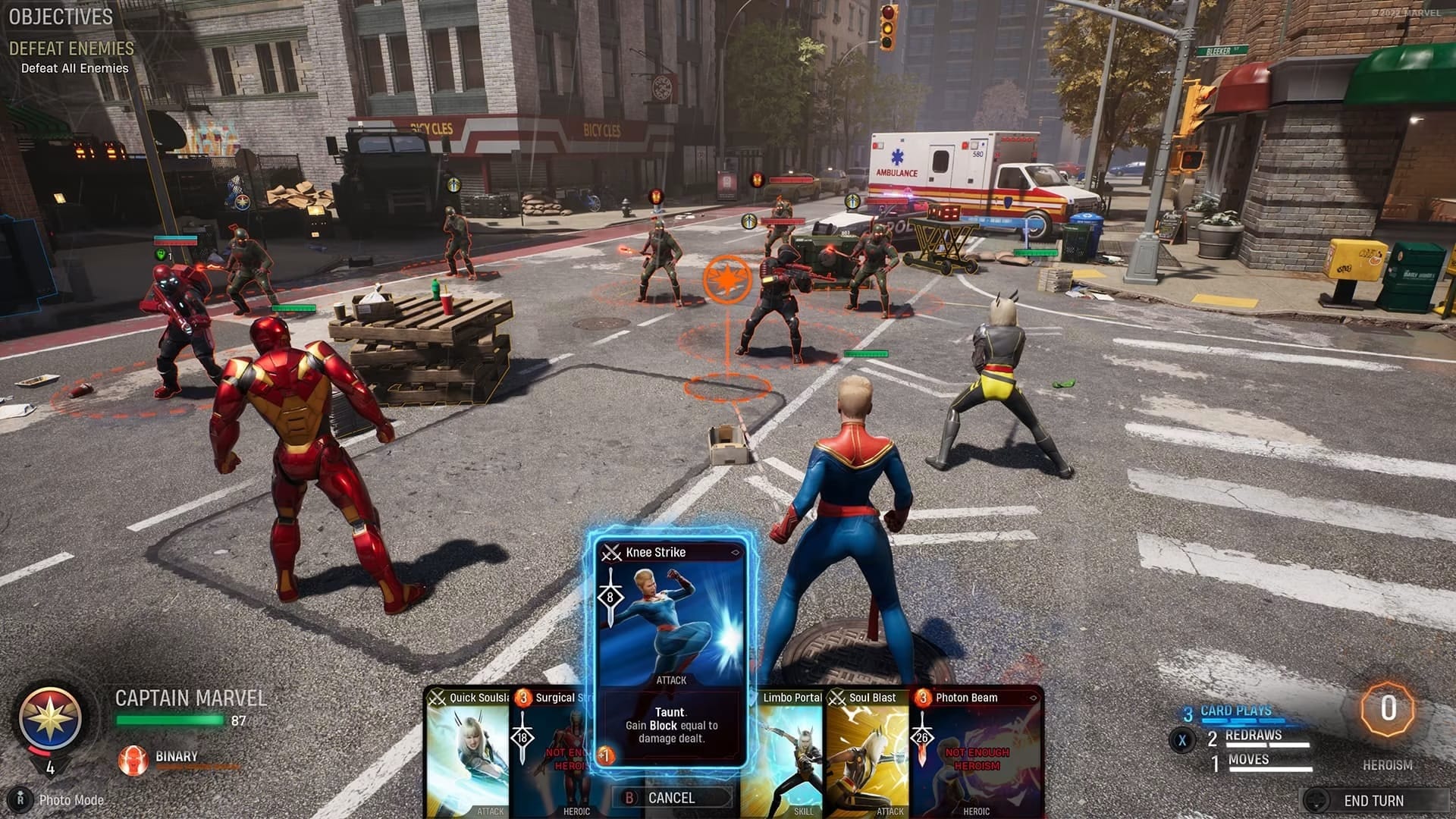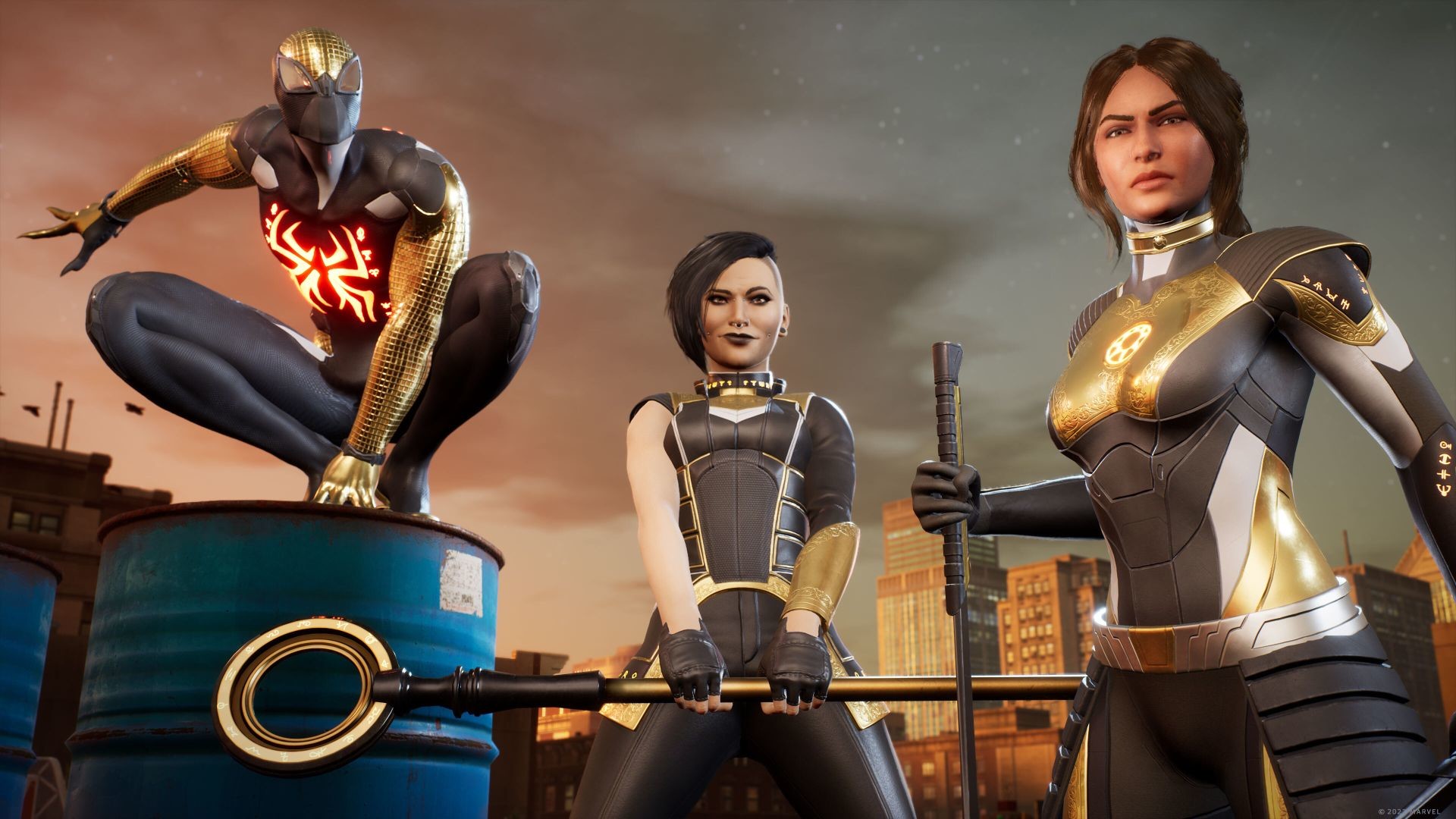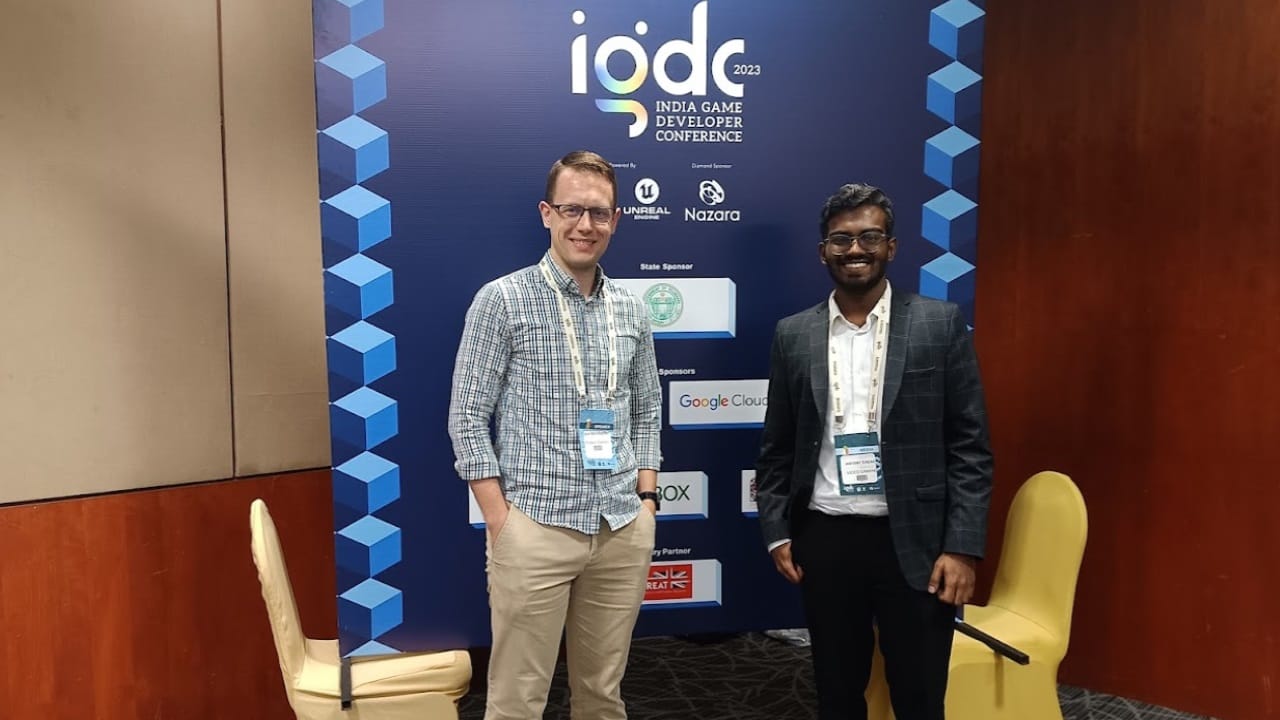Designing Marvel’s Midnight Suns With Director Joe Weinhoffer
The transition from XCOM’s soldiers to Earth’s greatest heroes

Marvel’s Midnight Suns is an outlier in the strategy space, pairing iconic heroes with XCOM’s tactical skirmishes. Strategy fans and Marvel buffs found a lot to like, especially its friendship system and card-based combat. In this interview, we’ll go into how the game came to be, what challenges stood in its path, and how they were overcome by Firaxis Games.
At IGDC 2023 in Hyderabad, India, I had a candid conversation with Joe Weinhoffer, Game Director at Firaxis Games. We covered a lot of ground on the development of Marvel's Midnight Suns. From game mechanics tuned to fit the superhero mold to omitted features, Joe spared no detail. Diversions include the Kinect game he worked on as a student and the work culture at Firaxis Games.
SUPERJUMP
How has your experience at IGDC been so far?
JOE
It's been great and tiring. It's been really exciting to learn more about the Indian game development community, seeing how much interest there is and how much passion there is for game development in India. It's been fun to talk to students and see what they're studying, what they're interested in. And yeah, I’m excited about what types of games and experiences people in India are interested in.
SUPERJUMP
That’s great. During your talk, you mentioned that Marvel had contacted your team to work on a game for them. How did your team pitch Midnight Suns to them?
JOE
It was an interesting collaboration because Marvel reached out as fans of XCOM 2. I think they thought we’d build a game for them that was similar to XCOM 2. Our first pitch for the game was essentially that. Instead of XCOM’s soldiers, we could use Marvel's S.H.I.E.L.D. agents and they could still be customizable, procedurally generated soldier units. We'd have heroes show up for big moments and that would be the major new gameplay mechanic, turning it into a superhero game.
But as we started prototyping, we realized that XCOM’s rules worked well with the soldier gameplay. It didn't feel great when you were playing with superhero characters. So we went back to Marvel and said “We don't feel like this is going to work.” We really wanted to double down on superheroes as the core gameplay element. But it was going to require us to pretty much rewrite the tactical ruleset.
"We really wanted to double down on superheroes as the core gameplay element."
Joe Weinhoffer
They were totally on board and were very supportive. They were excited by the idea that we would be re-crafting the game to resonate with it being a superhero experience. We knew that it would be a lot of work. I think the game turned out really well because of the changes that we made. Or because we started the project the right way, knowing that we would need to commit to making those changes.

SUPERJUMP
How did you approach building an entirely different tactical experience with superheroes in mind, compared to XCOM?
JOE
The biggest thing was to start with our fundamentals, the simplest game loops, and the smallest actions we knew we'd be taking over and over. In tactical combat, that was using hero abilities. In XCOM, your soldiers fire shots at aliens. In Midnight Suns, your heroes would use their arms in physical combat. We needed this core action to feel really good, feel like it satisfied our core pillars and nail that heroic feeling while playing the game.
So we started with that simple action and made sure it felt great. And then we built the rest of the tactical mechanics from there. Reintroducing randomness, resources to manage, and building up the rest of the tactical gameplay options that we initially had removed to get the game down to the basics to deliver a heroic experience.
SUPERJUMP
In your talk, you mentioned that the counter system didn't make it into the final game. Are there other features you liked that didn't make the cut?
JOE
I don't know if there's one that I really liked. We had another mechanic in that early prototype, the one with the counter system. We had a similar idea for heroes called combos. As heroes attacked and KOed (knocked out) enemies, their combo streak would go up. This would increase the chance of delivering an instant KO to an enemy, even if they had a bunch of health remaining.
It had similar problems to counter where it was very random. It would be one of those big bursts of surprise in a good way but it felt like you couldn't plan for it. If the hero happened to roll high enough, they’d land the combo. It was also frustrating when paired with the combo system because if an enemy countered your hero, that would end their turn and reset their combo streak.
It was another facet of that early prototype where we didn't have randomness. Once we introduced a whole bunch of randomness, we realized why it wasn't working and had to take it out. That was all part of our journey of discovering that we really liked the idea of cards to represent heroes in the game.

"The biggest thing was to start with our fundamentals, the simplest game loops, and the smallest actions we knew we'd be taking over and over."
Joe Weinhoffer
SUPERJUMP
You mentioned there was extensive prototyping around each of these features to see what worked or didn't. How extensive were the prototypes and what metrics did you use to assess whether it's something to implement or something you shouldn’t?
JOE
Since a lot of this was done very early in our production cycle, we could iterate very quickly. There were a lot of relatively minor changes that we could update on a day-by-day or week-by-week basis. We weren't really making builds of the game that were going to sit for a couple of months. Things were happening very rapidly. So when we had an idea or wanted to change something and try it out, we could put it in immediately since everything was very flexible and not locked down.
As an internal team, our design group, the other studio members, and the wider group of people on the project would try and test it. We could tell pretty quickly if we were going in the right direction when we were making such big changes. As we slowly started feeling like things were becoming more fun, that's when we opened it up to more people with “Hey, we actually feel like we've got something here. Come in, playtest this for us, see if we're on the right track.” We’d look for some validation, that we were moving in the right direction.
That process probably went on for at least a year or so where we had a much smaller team prototyping and changing things quickly. When we felt we had its core rule set mostly locked down, we could expand to enter full production for the project. We would still make changes in production and iterate on them as needed. But these changes were much smaller. At the start of the project, you make big changes really quickly to find out what's right and once you go into the production lifecycle, the tweaks become smaller.
SUPERJUMP
I noticed that you've worked on a project on Microsoft's Kinect before for a capstone project as a student. What are your thoughts on the Kinect?
JOE
I don't think I have burning opinions on the Microsoft Kinect. We were required to use it for the student project. The Kinect itself is not really around anymore. But we've definitely seen the fruits of what it started and what it inspired with VR and AR gaming. Using movement and facial tracking in games has become integrated into that whole side of the industry.
I think the Kinect was a little bit ahead of its time but as a piece of hardware you had to set up, it was kind of clunky. Now you have the Oculus, I guess it's the Meta Quest, where you don't need to put cameras up around the room and have a great kind of passthrough. We're starting to see Apple get into the AR space too. The Kinect is one of the first pieces of technology to explore that side of the game industry. And yeah, it was fun to work on it.
SUPERJUMP
I got to speak with Mark Nauta from Firaxis last year and I could tell that he had great ideas, especially on the strategy side of things. How does it feel to work alongside such interesting people and have you handled any clashes of ideas in such an environment?
JOE
It's fantastic. Everyone at Firaxis has the player in mind, we're trying to design and build the best games that we can for our fans and craft interesting, compelling strategy and tactical experiences. Even if we have different competing ideas as designers, we generally have good conversations about what we feel will resonate most with our players, with our fans. We discuss what makes the most sense for the game or the problem we're trying to solve.
We could look at a table of ten different ideas. They might all sound really fun. But what is going to be the best fit for the game? What's going to resonate with the core pillars and the experience that we're trying to provide? What is going to have the highest impact right now? What is going to give us the most value for the time it's going to take or the money that's been spent? It depends on the project timeline. Everyone at the studio is very collaborative. I work personally with Mark all the time and it's really fantastic to have intelligent, engaged, passionate people as collaborators.

"We could look at a table of ten different ideas. They might all sound really fun. But what is going to be the best fit for the game?"
Joe Weinhoffer
SUPERJUMP
What games are you playing right now?
JOE
I've been working my way through Baldur's Gate 3. I’m just starting Act 2 after 55 hours. The game is insane. It's huge. I picked up the new Super Mario Wonder which is fantastic and I’m really enjoying that. I've also been playing Tears of the Kingdom for the last year, just taking my time with it. I played a little bit of Diablo 4 the other week when the new season started. And I played Lamplighters League which came out recently.
SUPERJUMP
Do you have any advice for people looking to join the games industry?
JOE
Keep playing games but try to analyze them critically, especially if you're interested in design. It's really helpful to play a game and figure out if there are pieces that you really like. Ask yourself to look critically and try to understand why it was designed that way.
Just as importantly, look for things that you dislike. There are games you play for 30 minutes or an hour before putting it down. You never want to touch them again. It’s important to understand why that happens. Why didn't that game grab you? Because that will start to inform your understanding and your decisions about what to include in your game design and what not to. You’ll understand what will appeal to a broader player base and your target audience. It's hugely valuable to try to build games and have the experience of taking a game project from start to finish. To understand all the components that go into developing a finished game project, start something and start small.
It's never bad to focus on the smallest pieces of your game first and then solve the next problem in front of you. Allow the game’s complexity to increase from there. It can be very tempting to throw things in upfront and be excited by the potential of all these cool features and ideas. That could bog down the game and make it very complex. As tempting as it is, try to resist that urge and focus on the basic elements first. This will give you a strong foundation to build on.
SUPERJUMP
We’d like to thank Joe for making time for us, and best wishes to Firaxis Games for their upcoming projects.
Stay tuned to SUPERJUMP! We’ve got a whole slate of awesome interviews planned so make sure to check back regularly and keep watching our social media as well.
